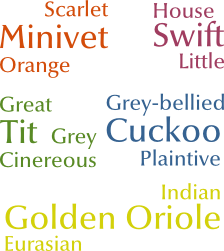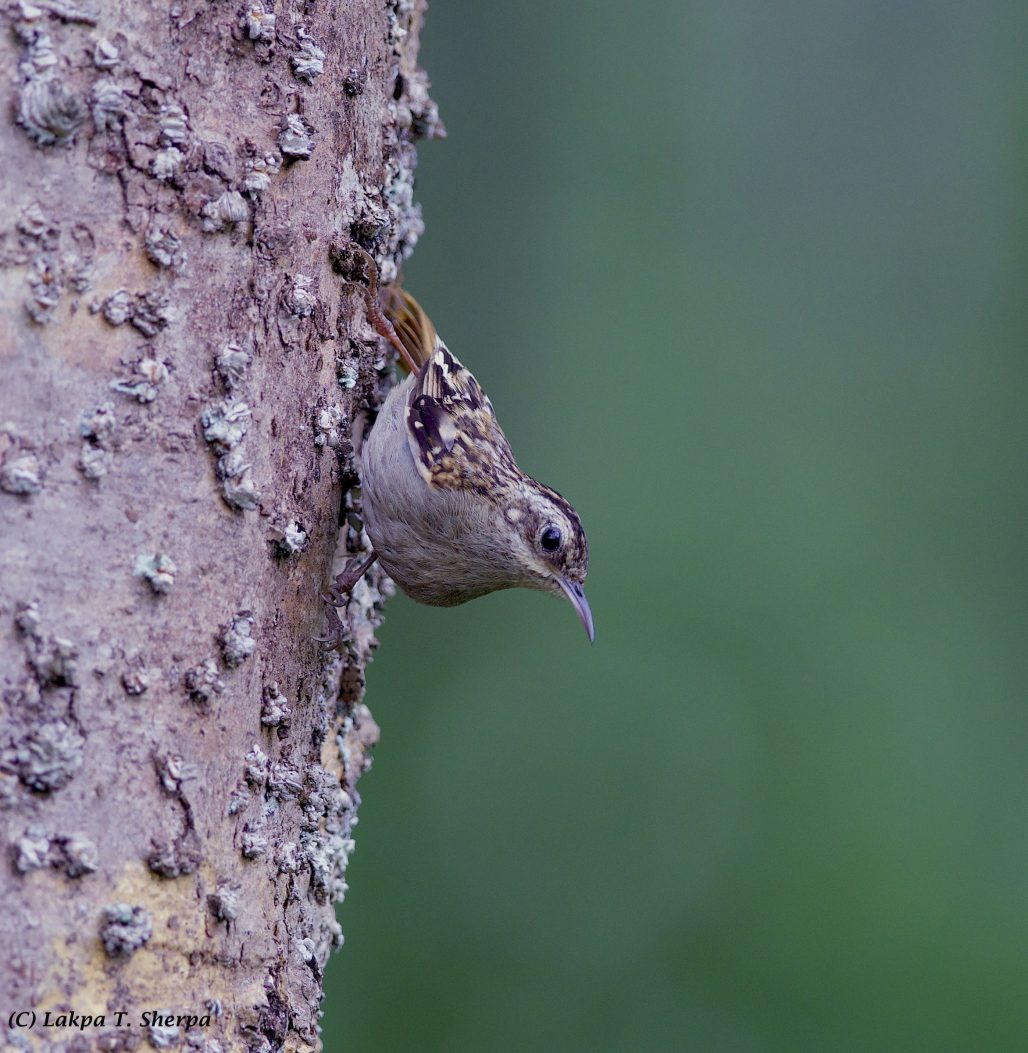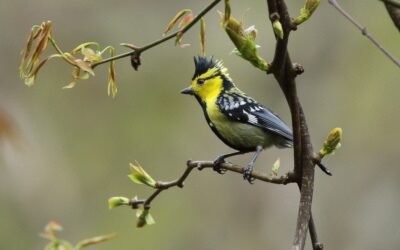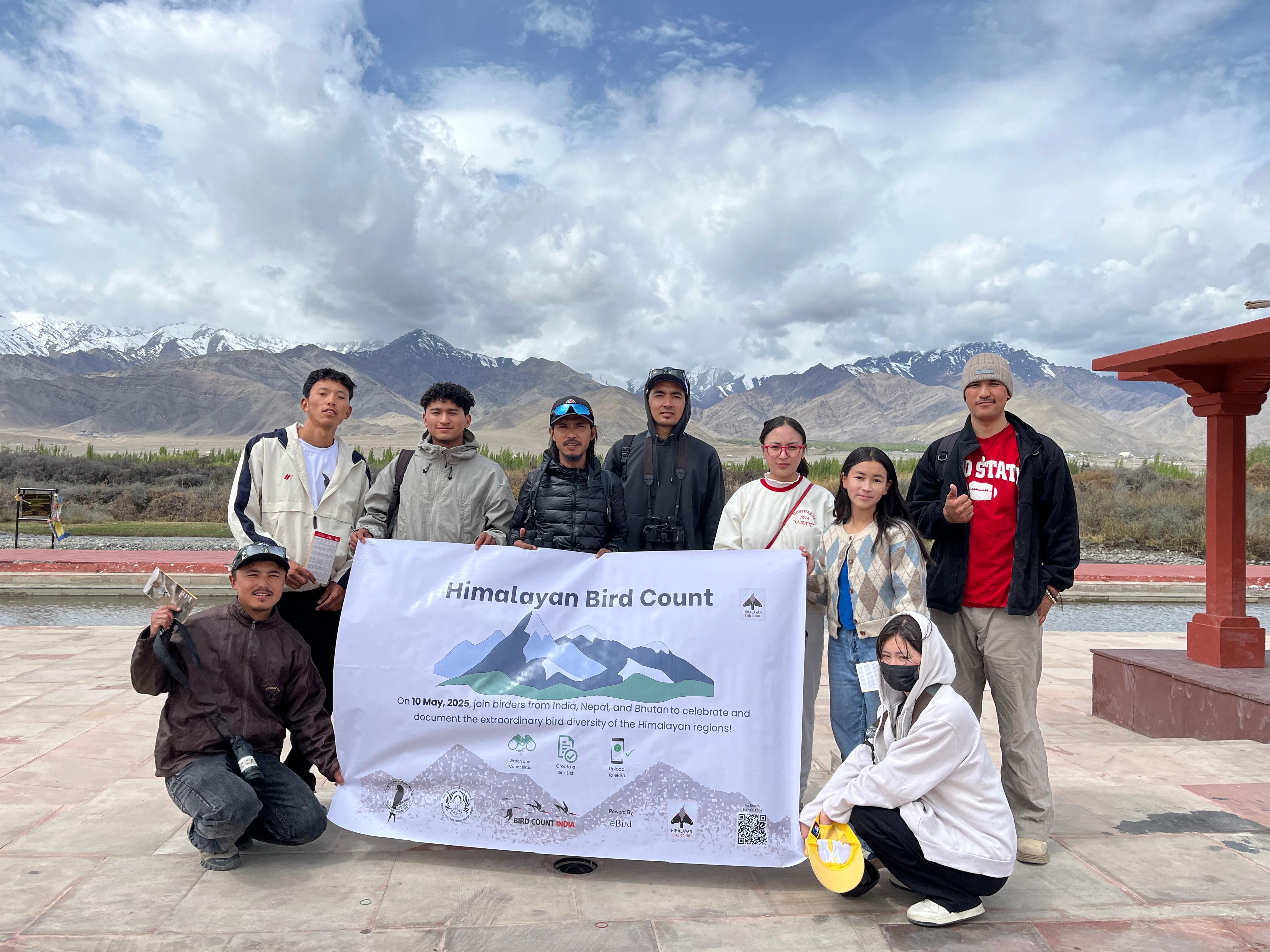 If you have ever been confused by the names that eBird uses for Indian birds, have been frustrated at not being able to find the species you want, or would like to see how eBird names correspond to other major bird naming systems, then this article is for you!
If you have ever been confused by the names that eBird uses for Indian birds, have been frustrated at not being able to find the species you want, or would like to see how eBird names correspond to other major bird naming systems, then this article is for you!
[You can skip ahead to a listing of common naming confusions, and can download an excel file with names of Indian species.]
The eBird taxonomy and naming system
The eBird taxonomy follows the Clements Checklist of the Birds of the World and in fact, eBird and Clements are tightly integrated. The taxonomy is updated annually, in August, to reflect changes that have occurred in the previous year. These include the addition of newly-discovered species, renaming of English or scientific names because of better taxonomic understanding, additions resulting from subspecies or subspecies groups being ‘elevated‘ to species status, and so on.
Species splits and naming
In the last case (subspecies elevated to species status; ie a ‘split’ in the original species), the changes are often confusing for us birders, because the English names often change as well. For example, when the Eurasian Golden Oriole (Oriolus oriolus) was split, the Indian subspecies became known as the Indian Golden Oriole (Oriolus kundoo). Similarly, a split in the Great Tit (Parus major) resulted in the various Indian subspecies being collectively called Cinereous Tit (Parus cinereus).
Then there are species that are split within India: eg Plaintive Cuckoo (Cacomantis merulinus) has been split into Plaintive (C. merulinus) and Grey-bellied (C. passerinus), with Grey-bellied being restricted to central and southern India. Similarly House Swift (Apus affinis) has been split into Little Swift (Apus affinis) and House Swift (Apus nipalensis), with A. nipalensis being restricted to the Himalayas. These changes cause a lot of confusion, with birders trying to report ‘Plaintive Cuckoo’ and ‘House Swift’ from southern India, where the species with these names now do not occur!
eBird/Clements English names for Indian birds
For the majority of species, the English names used in the eBird/Clements taxonomy are identical or at least similar to the English names that we in India are used to. Bar-headed Goose, Little Grebe, Spotted Owlet, Blyth’s Reed-Warbler, and Baya Weaver are the same names in both cases. But there are some species for which the names differ. For example Common Kingfisher and Small Blue Kingfisher are the same species (Alcedo atthis), but many of us are more used to the latter name; similarly with Spot-breasted Fantail and White-spotted Fantail (both Rhipidura albogularis). And, of course, for recent splits, we may still be accustomed to the name given for the overarching species (eg Great Tit) because that is what is written in most current field guides.
For these situations, the eBird/Clements names are unfamiliar, and need translation. Fortunately, eBird has a feature for alternative English names to be displayed. We have implemented such a set of names for India. If you go to your eBird account preferences and adjust the settings to display names as ‘English (India)‘, you will see English names customized for Indian birders based on what names are most familiar to us.
For example, we noticed that many birders were unaware that the ‘Great’ Tits they were seeing are now called Cinereous Tit; so while the eBird/Clements standard name is Cinereous Tit, the ‘English (India)’ name has been set to ‘Cinereous Tit (Great Tit)’, so that when you search for Great Tit, you will find this species. (Be sure to look for the scientific name Parus cinereus, to doublecheck that you are reporting the correct species.) Similarly, birders in the peninsula have been reporting House Swift, when actually, following the split, the southern species is Little Swift, and the Himalayan species is House Swift. To make the distinction clearer, the ‘English (India)’ names are ‘Little Swift (Indian House Swift)’ and ‘House Swift (Nepal House Swift)’ respectively. In doing this, we are not attempting to invent new English names for birds, but rather to just provide guidance for birders trying to report their sightings.
Common taxonomic and naming confusions
Below is a list of common taxonomic confusions based on changes over the past few years. All English names here are given as specified by the ‘English (India)’ setting in eBird. The listing of species is not in taxonomic order, but rather in roughly decreasing order of common-ness.
Splits resulting in single (mainland) Indian species
-
Great Tit Parus major is now split into European Great Tit Parus major (outside India) and Cinereous Tit (Great Tit) Parus cinereus.
-
Eurasian Golden Oriole Oriolus oriolus is now split into Eurasian Golden Oriole (O. oriolus; outside India) and Indian Golden Oriole (O. kundoo).
-
Common Stonechat Saxicola torquata is now split into many species of which only Common/Stejneger’s Stonechat (Siberian/Stejneger’s Stonechat) Saxicola maurus occurs in India.
-
Eurasian Thick-knee (Eurasian Stone-curlew) Burhinus oedicnemus is now split into Eurasian Stone-curlew (B. oedicnemus; outside India) and Indian Stone-curlew (B. indicus).
- Plain Martin Riparia paludicola is now split into Plain Martin (R. paludicola; outside India) and Grey-throated Martin (R. chinensis).
-
Eurasian Treecreeper Certhia familiaris is now split into Eurasian/Brown Treecreeper (C. familiaris; outside India) and Hodgson’s Treecreeper (C. hodgsoni; W Himalayas)
-
Barn Owl Tyto alba is now split into Barn Owl (T. alba; widespread in India) and Andaman Masked-Owl (T. deroepstorffi; Andamans).
-
Green Imperial-Pigeon Ducula aenea now split into Green Imperial-Pigeon (D. aenea; mainland) and Nicobar Imperial-Pigeon (D. nicobarica; Nicobars).
-
Hill Swallow Hirundo tahitica is now split into Hill Swallow (House Swallow) (H. domicola; W. Ghats) and Pacific Swallow (H. tahitica; SE Asia, Andamans).
Splits resulting in multiple Indian species
-
House Swift Apus affinis, is now split into House Swift (Nepal House Swift) (A. nipalensis; Himalayas) and Little Swift (Indian House Swift) (A. affinis; India S of the Himalayas); ranges abut and may overlap in some places.
-
Plaintive Cuckoo Cacomantis merulinus is now split into Plaintive Cuckoo (C. merulinus; NE India) and Grey-bellied Cuckoo (C. passerinus; rest of the country).
-
Black Bulbul Hypsipetes leucocephalus is now split into Square-tailed Bulbul (H. ganeesa; W. Ghats) and Himalayan Black Bulbul (H. leucocephalus; Himalayas and NE India).
-
Plain Flowerpecker Dicaeum concolor now split into Nilgiri Flowerpecker (D. concolor; W. Ghats), Plain Flowerpecker (D. minullum; NE India) and Andaman Flowerpecker (D. virescens).
-
Black-headed Munia Lonchura malacca now split into Tricolored Munia (L. malacca; S, C and W India) and Chestnut Munia (L. atricapilla; N, E and NE India)
-
White-throated Fantail Rhipidura albicollis is now split into White-throated Fantail (R. albicollis; N, E & NE India) and Spot-breasted Fantail (White-spotted Fantail) (R. albogularis; C and S India). These two species have a hybridization zone in Odisha.
-
Yellow-cheeked Tit Parus xanthogenys is now split into Black-lored Tit (P. xanthogenys; Himalayas), Indian Tit (Indian Black-lored Tit) (P. aplonotus; peninsular and S India) and Yellow-cheeked Tit (P. spilonotus; NE India).
-
Chestnut-bellied Nuthatch Sitta castanea is now split into Chestnut-bellied Nuthatch (S. cinnamoventris; Himalayas and NE India) and Indian Nuthatch (S. castanea; India S of the Himalayas); range may overlap along the Shivaliks.
-
Scarlet Minivet Pericrocotus flammeus now split into Orange Minivet (P. flammeus; W. Ghats) and Scarlet Minivet (P. speciosus; N, C and NE India).
-
Common Hill Myna Gracula religiosa now split into Common Hill Myna (G. religiosa; C & NE India) and Southern Hill Myna (G. indica; W. Ghats).
-
Chestnut-tailed Starling Sturnus malabaricus is now split into Chestnut-tailed Starling (Sturnia malabarica; most of India) and Malabar Starling (S. blythii; W. Ghats).
-
Large Woodshrike Tephrodornis gularis is now split into Large Woodshrike (T. gularis; parts of N, E and NE India) and Malabar Woodshrike (T. sylvicola; W. Ghats).
-
Changeable Hawk-Eagle Spizaetus cirrhatus is now split into Crested Hawk-Eagle (Nisaetus cirrhatus; peninsular India) and Changeable Hawk-Eagle (Nisaetus limnaeetus; N and NE India). Note change in genus name.
-
Black-crested Bulbul Pycnonotus melanicterus is now split into Black-capped Bulbul (P. melanicterus; Sri Lanka), Black-crested Bulbul (P. flaviventris; N, C and NE India) and Flame-throated Bulbul (Ruby-throated Bulbul) (P. gularis; W. Ghats).
-
Grey Nightjar Caprimulgus indicus is now split into Grey Nightjar (C. jotaka; N & E India) and Jungle Nightjar (C. indicus; S. India).
-
Pompadour Green Pigeon Treron pompadora now split into Sri Lanka Green-Pigeon (T. pompadora; Sri Lanka), Grey-fronted Green-Pigeon (T. affinis; W and E Ghats), Ashy-headed Green-Pigeon (T. phayrei; part of N and NE India) and Andaman Green-Pigeon (T. chloropterus; Andamans and Nicobars).
-
Crimson-throated Barbet Megalaima rubricapilla now split into Crimson-fronted Barbet (Psilopogon rubricapillus; Sri Lanka) and Malabar Barbet (Crimson-throated Barbet) (Psilopogon malabaricus; W. Ghats). Note change in scientific name of these and all Indian Megalaima barbets to Psilopogon.
-
Isabelline Shrike Lanius isabellinus is now split into Isabelline Shrike (L. isabellinus; wintering in N & NW India) and Red-tailed Shrike (L. phoenicuroides; autumn migrant in W India).
-
Asian Drongo-Cuckoo Surniculus lugubris is now split into Fork-tailed Drongo-Cuckoo (S. dicruroides; widespread across India) and Square-tailed Drongo-Cuckoo (S. lugubris; NE India), although note that the distribution of these taxa is very poorly known.
-
Mountain Hawk-Eagle Spizaetus nipalensis is now split into Mountain Hawk-Eagle (Nisaetus nipalensis; N, C and NE India) and Legge’s Hawk-Eagle (Nisaetus kelaarti; W Ghats). Note change in genus name.
-
Dark-throated ThrushTurdus ruficollis now split into Red-throated Thrush (T. ruficollis; wintering in Himalayas) and Black-throated Thrush (T. atrogularis; wintering in N and C India).
-
Rufous-headed Parrotbill Paradoxornis ruficeps now split into White-breasted Parrotbill (Psittiparus ruficeps; N of Brahmaputra) and Rufous-headed Parrotbill (Psittiparus bakeri; S of Brahmaputra). Note change in genus name of this and other Paradoxornis.
-
Brown-throated Treecreeper Certhia discolor is now split into Sikkim Treecreeper (Brown-throated Treecreeper) (C. discolor; E Himalayas) and Hume’s Treecreeper (C. manipurensis; S of Brahmaputra).
Full India bird list
For your reference, we have collated the names of 1,305 species known to occur in India into an excel file. For each of these species, the eBird default name, the ‘English (India)’ name, the eBird scientific name, a link to the species map on eBird is given. Also, for each species, the English and scientific names under three other taxonomies is given: the Indian BIRDS name, International Ornithological Committee, and BirdLife International. Many thanks to Praveen J, R Jayapal, and Aasheesh Pittie for compiling the master list based on which this file was generated.
[Download the India bird list – updated Aug 2016]
Note: another valuable resource for viewing bird lists from various parts of the world, under a taxonomic system of your choice, is Avibase.
Header Image: Sikkim Treecreeper (Brown-throated Treecreeper) Certhia discolor © Lakpa Tenzing Sherpa/ Macaulay Library





Very useful. Thank you.
Useful and encouraging
Very useful and thanks for making available the India bird list as an excel file.
Thanks for the downloadable India bird list incorporating different versions of the names and for including English (India) names. Very useful!
Very useful piece of information. The excel sheet with Indian names is additional useful feature. Thanks.
Thank you Sir. Very glad you found it useful!